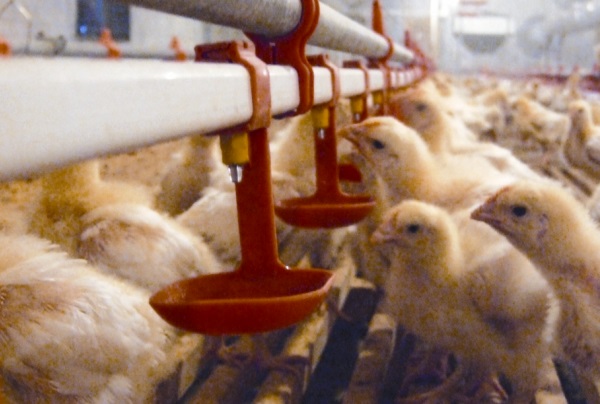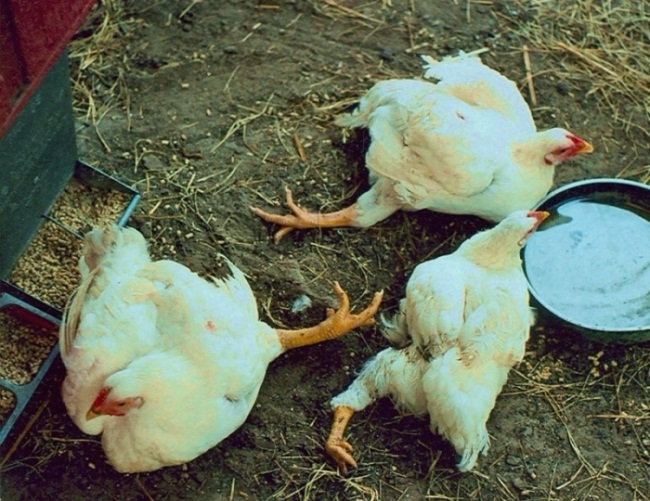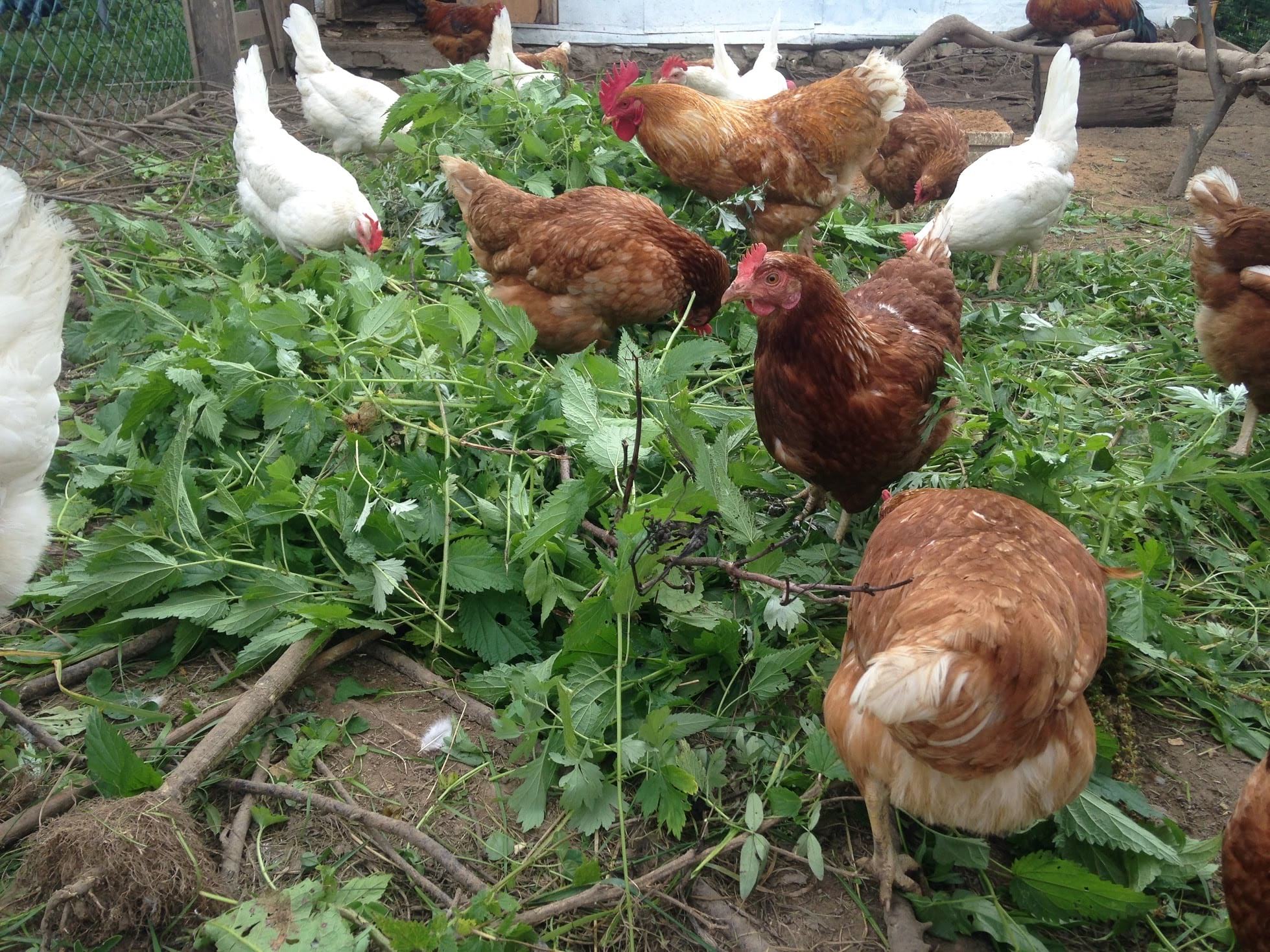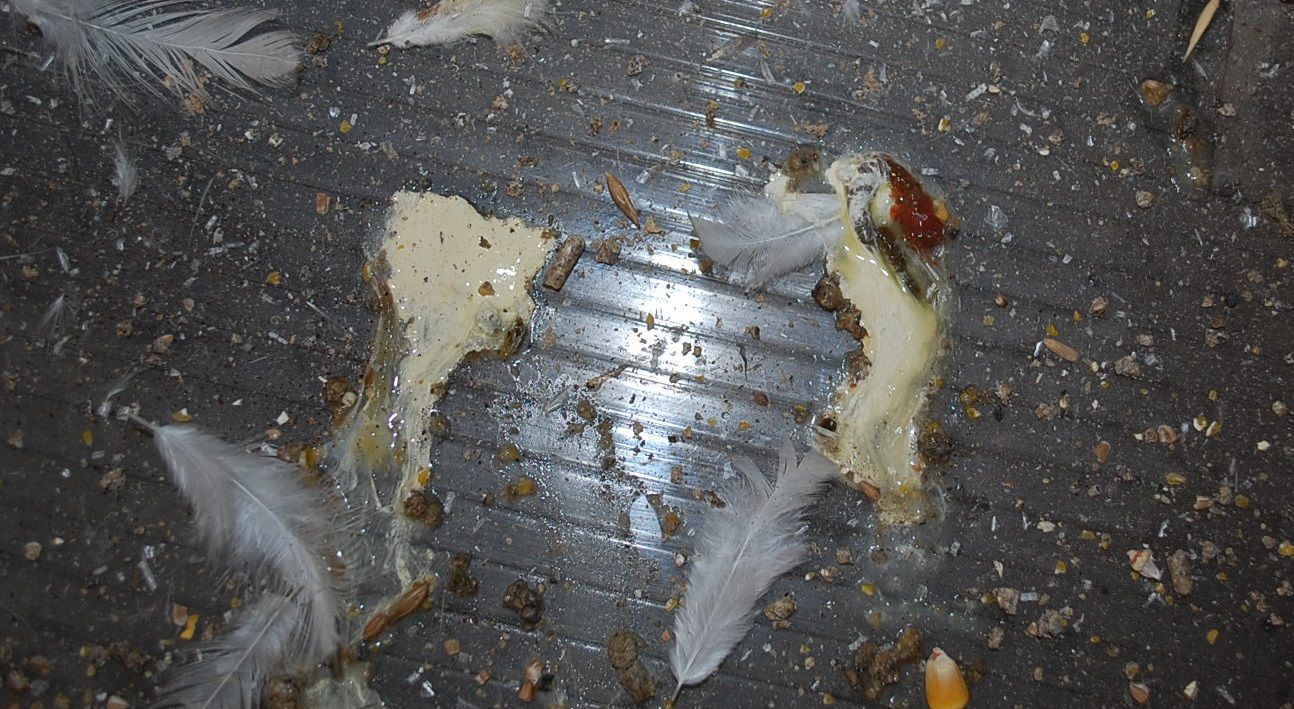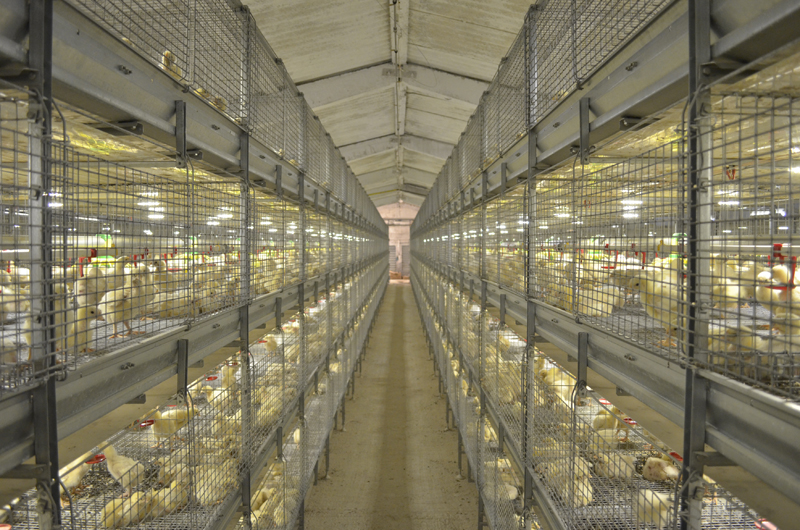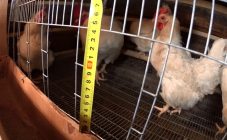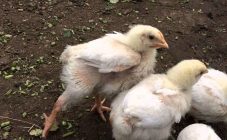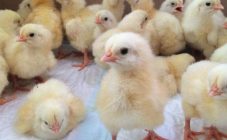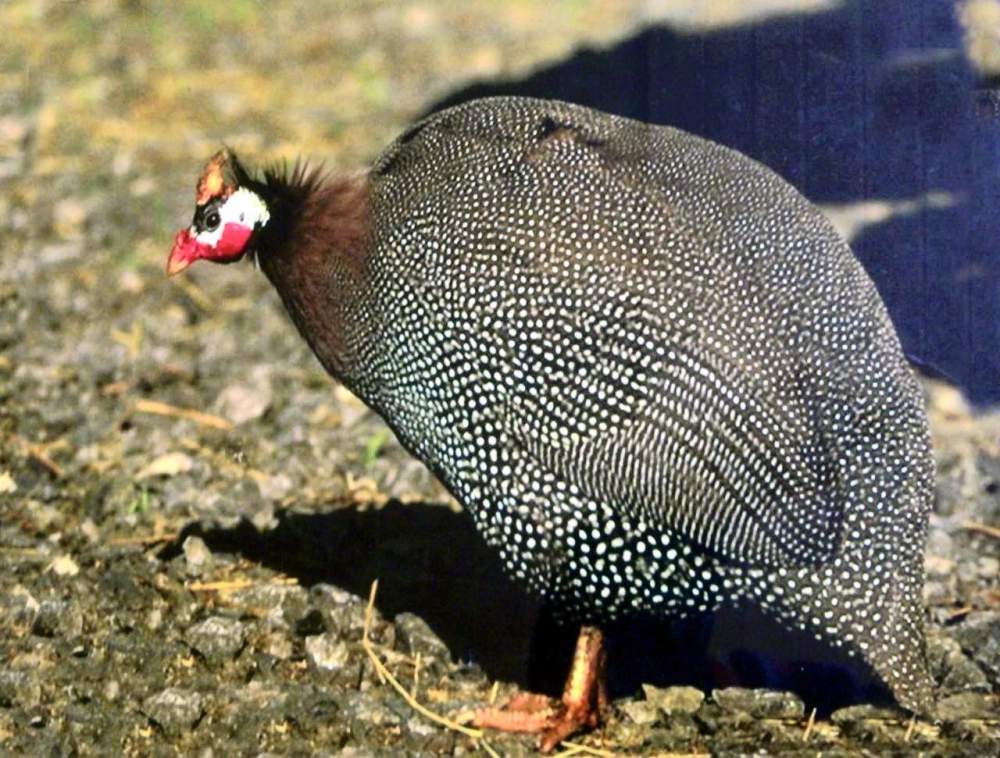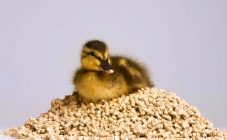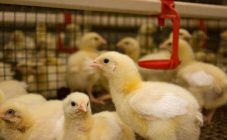Content:
A broiler chick is a hybrid created by crossing different breeds or lines. At the same time, hybrid strength (heterosis) is manifested in early maturity: by 2 months, young animals reach a mass of 2.5 kg. It is profitable to raise broiler poultry, but difficulties in the household can arise due to a lack of experience, knowledge and the inability to create the necessary conditions for feeding and keeping.
Broiler care rules at home
Broiler chickens can be called unpretentious, but at the same time they have low immunity. In broilers, diarrhea is the most common problem. Selection when obtaining these hybrids is not carried out to increase the viability, since the lifespan of this bird is no more than 3 months.
At large poultry complexes, all hygiene standards are strictly observed when fattening and keeping young animals, they are treated against parasites and the birds are vaccinated. The feeding ration is balanced in all respects and is carried out according to specially developed norms. The living and feeding conditions in a private household rarely meet the necessary standards, which, as a rule, leads to diseases and death of chickens. Farm-bred broilers are usually weighed significantly below those of the factory.
To prevent the occurrence and spread of diseases among the livestock, it is recommended:
- Disinfect the house before moving into the house. To cope with ectoparasites and bacteria resistant to disinfectants, a complex treatment is carried out, which consists of calcining with a blowtorch and disinfecting with a special solution.
- Buy chickens directly from the producer (at the poultry farm), and not from dealers. It will not work to buy broilers from private owners, since only specialized farms are engaged in breeding and incubation.
- Young animals should not be kept together with adult chickens. It is best to place broiler chicks in cages. This content allows you to avoid infection with worms and infection while walking and from contact with other birds. Lack of active movement contributes to rapid growth and weight gain.
- Cleaning in the poultry house (cages) should be carried out daily: remove droppings, change the litter, monitor humidity, change the water, wash the feeders and drinkers. Cleaning equipment must be disinfected and not used for cleaning the premises of other animals.
- In order for the birds to have the opportunity to clean the plumage, a container is installed in the poultry house (cage), which is filled with a mixture of sand and ash.
- it is necessary to periodically control rodents - carriers of infection.
- When feeding, use special feed for broilers and products that are easy to digest: cottage cheese, yogurt, oatmeal, millet.
- Do not feed broilers for more than 3 months, otherwise the bird may die from an excess of muscle mass.
Processing is carried out according to a certain scheme, using drugs:
- from bacterial diseases - enrosol, prepared before use (2-4 days of life);
- to raise immunity and prevent vitamin deficiency - chiktonik (5-9, 15-17, 28-32 days of life);
- for coccidosis - baycox (10-12 days);
- for Newcastle disease - vaccine in the nose or water (27 days);
- prevention of helminths - promectin by mouth (2 months).
Why do broilers start to vilify
If broilers have diarrhea, how to treat it at home is a serious problem for many owners. This is the very first sign that the bird is unhealthy. The onset of the disease is also indicated by a lack of appetite, various disorders of motor functions, thirst, an increase in body temperature, shortness of breath, wheezing, discoloration of the beak, ridge, earrings, flow from the nostrils, increased salivation, swelling of the paws, suppuration of the eyes. There are several reasons that can lead to illness and diarrhea in chickens:
- Inappropriate feed. It is about using food intended for other groups of birds.
- Spoiled feed (expired, moldy, lumps, damp) can lead to diarrhea and death of chickens, so they should be bought from trusted and bona fide suppliers.
- Hypervitaminosis can lead to serious metabolic disorders, therefore, the introduction of vitamins into feed must comply with established standards.
- Abrupt change of feed (grain - mash). The digestive system of young animals is not able to instantly readjust to a new rhythm of work. The transfer to new feed should be carried out in stages.
- Large amount of green food (grass). The herb is a succulent food with a laxative effect.
- Disorders of the gastrointestinal tract. One of the most common diagnoses in young animals is gastritis.
- Seasonal vitamin deficiencies. Diarrhea goes away if the level of fortification of feeding is brought back to normal.
- Poisoning. The cause of intoxication can be a galvanized or copper drinking bowl (feeder), poisonous plants on the run, smoking in the house of the poultry house, the use of aerosols, chemical means of controlling rodents and other pests.
- Stressful situations. Any change in the habitual way of life is a serious shock for the bird, and it can store. This can be provoked by a transfer to another room, the first exit to the street, new lighting, a new person in the poultry house, unusual sounds, noise. Such diarrhea does not pose a threat, since it disappears after the bird gets used to new conditions.
- Hypothermia. Low temperatures are not as terrible for a bird as a draft and a damp room. Colds are accompanied by diarrhea.
- Keeping in dirty rooms, without observing sanitary standards, can provoke the development of infectious diseases and the death of livestock.
- Helminthiasis. Infection with worms can occur through feed, dishes, a dirty house or walking, from other birds and animals. If appropriate treatment is not taken, chicks may die.
- Infections are dangerous because they quickly spread among the chickens and can lead to the death of the entire livestock, if urgent measures are not taken.
Litter color
In many cases, a preliminary diagnosis can be made by the color and structure of the stool:
- In broilers, brown diarrhea is a sign of eimeriosis. This color is formed by mixing digested compound feed (yellow) and blood that enters the intestines as a result of the vital activity of coccidia.
- Dark brown diarrhea, sometimes bloody - a manifestation of pasteurellosis.
- White diarrhea in broilers and its treatment is associated with pullorosis. There are practically no chances to cure a chicken infected in an egg or in the first day of life.
- Green diarrhea can appear with an excess of grass feed, histomonosis and the use of spoiled feed.
- Yellow diarrhea may indicate the presence of worms.
Broiler diseases: signs, causes
Many infectious diseases of domestic animals, including birds, pose a danger to humans. In order not to get infected, you need to follow the rules of hygiene: use respirators, masks and gloves, go into the poultry house in boots, wash and disinfect hands and clothes, and if necessary, do preventive vaccinations.
Diarrhea caused by helminths, bacteria and viruses is the most dangerous. In this case, you cannot do without the use of antibiotics and special medications. There are several of the most common chicken diseases:
- Salmonellosis. Characterized by white droppings, sometimes foamy, fever and lethargy. Adult poultry is a source of bacteria and chronic disease.
- Pasterrelosis (avian cholera). The disease develops with lightning speed and leads to the death of the bird. It is recommended to destroy the infected bird, since it is very difficult to achieve a complete cure. In addition to green diarrhea, there is a high fever, mucus from the nostrils and wheezing breathing.
- Coccidosis (eimeriosis). The disease can be detected even at the initial stage by ruffled feathers and brown (yellow) diarrhea with foam and blood. Chickens have swelling of the goiter and legs. Outbreaks are typical for spring and autumn, when the level of immunity decreases. Infection occurs through contact with a sick bird or equipment. The manifestation of strong thirst and pallor of the scallops and beards are noted. Affected birds are immediately isolated and treated. Any delay can lead to death. The rest of the birds and the chicken coop are treated for prevention purposes.
- Histomoniasis. It is dangerous for birds walking on the street, as it is transmitted through soil worms and arthropods. Typical signs are darkening of the skin on the head to blackness, a decrease in temperature, lowered wings, the desire to hide the head under the wing. Chickens usually get better if treatment is started without delay.
- Pullorosis (avian typhus). The disease is accompanied by debilitating diarrhea, leading to dehydration. Diarrhea is white to brownish green in color. If untreated, the bird dies within 3-5 days.
- Gastritis. It develops with improper feeding of broilers and is manifested by diarrhea, colic and depression. With the normalization of the regime and diet of feeding, the problem is solved.
- Bird flu. The disease develops quickly and is often fatal. Diarrhea is frequent and profuse from yellow to green. The bird's crest and catkins turn black, wheezing, foam from the beak appear, the head is thrown back and convulsions are noted.
What to do, how to treat
What to do if broilers vilify, you can find out by reading special literature. If you find any signs that indicate a risk of disease, you need to establish the cause. The treatment will depend on this. If there is a suspicion that diarrhea has manifested itself due to vitamin deficiency, stress or an excess of green food, then you can cope on your own using folk remedies. In case of infections, you cannot do without the help of a veterinarian. Sick birds are isolated, and the feces are sent for analysis and all the recommendations of a specialist are followed.
On an industrial scale, sick birds are destroyed, as there is a high risk of losing a significant part of the livestock. Farmers and poultry lovers have the opportunity to provide treatment:
- Before visiting the veterinarian and receiving the test results, chickens can be given chloramphenicol (1 tablet for half a glass of water), biseptol (40 mg for 1 head 2 times a day), tetracycline (1 tablet for 1 liter of water - 3 drops 3 times a day).
- In the absence of infection, diarrhea can be overcome by simple means of strengthening the stool, as well as properly organizing feeding and maintenance.
- Salmonellosis treatment lasts from 2 weeks to 1 month. The first 2-3 weeks, sulfanilamide is used, a week later the course is repeated to avoid a new outbreak of the disease. Also for treatment, you can use chloramphenicol: 40 mg per 1 kg of live weight 3 times a day.
- Flosan is recommended to be given to chickens in case of poisoning, adult chickens are treated with levomycytin and biseptol. For gastric lavage, a weak manganese solution is poured into drinkers.
- For coccidosis, coccidrodin is used, dissolved in a liquid. They are soldered for 2 days, repeating the course in 5 days. Coccidin powder is added to feed within a week.
- In the case of vitamin deficiency, check the diet for a sufficient amount of minerals, add salt, shell, yeast. Loperamide (pediatric dose) can be used.
- For the treatment of pullorosis and pasteurellosis, neomycin, biomycin, sulfadimezin, and zolen are used. The rates depend on the age of the chicks and are determined by the doctor.
- In case of histomonosis, metronidazole added to feed and biomycin, which is dissolved in drinking water or injected intramuscularly, will help.
Tips and tricks from experienced poultry farmers
How to treat loose stools in broilers, will tell the life experience of practitioners. People involved in keeping and breeding poultry are in no hurry to use antibiotics, using numerous alternative medicines and techniques that also help to prevent diseases:
- feed with millet porridge;
- brew strong tea once (without sugar);
- add a solution of furacilin or potassium permanganate to the drinkers;
- drink rice water (boiled rice) and jelly;
- baked potatoes, dried rowan berries and hard-boiled eggs have a good fixing effect;
- add activated carbon and chalk to the feed;
- you can use the astringent properties of red wine by adding 2 drops to the drinker;
- monitor the calcium content in the diet;
- include more rough food in the diet;
- add probiotics to restore gastrointestinal microflora;
- with non-infectious diarrhea, drink with a decoction of chamomile, quince and pomegranate peel;
- an available antiseptic and stool fixer is clay water.
Broiler raising is troublesome. It is worth doing it only if a person has studied the theoretical basics of poultry farming and has the ability to create all the necessary conditions. Otherwise, diseases are inevitable. It must be remembered that bird diseases can be dangerous to humans, therefore, precautions should be taken when contacting birds. And most importantly, if broilers vilify, what to treat - the veterinarian decides, you cannot self-medicate.
